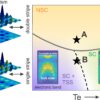Researchers have validated a new radiolabeled molecule that can be used with imaging tests to accurately detect and characterize brain injury. The team, led by investigators at Massachusetts General Hospital (MGH), recently received clearance from the U.S. Food and Drug Administration (FDA) to initiate a first-in-human study with the strategy.
As described in the Journal of Cerebral Blood Flow & Metabolism, the novel tracer, called [18F]3F4AP, is designed to bind to potassium channels and is radiolabeled so it can be visualized through positron emission tomography (PET) imaging. Potassium channels in the brain’s neurons become exposed when the neurons become demyelinated, or lose their protective coating (called myelin), which occurs with a variety of neurodegenerative conditions.
“Because potassium channels increase in expression and accessibility upon demyelination, this tracer holds promise for imaging multiple sclerosis and other diseases such as traumatic brain and spinal cord injuries, stroke and Alzheimer’s disease,” said co-senior author Pedro Brugarolas, Ph.D., an investigator in MGH’s Gordon Center for Medical Imaging and an assistant professor in the Department of Radiology at Harvard Medical School.
When tested in monkeys, [18F]3F4AP exhibited excellent properties for brain imaging, including high penetration into the brain, fast washout or clearance, and excellent reproducibility when tested multiple times, researchers say. Furthermore, “the tracer showed unusually high resistance to metabolic degradation and minimal binding to blood proteins—properties that are difficult to come by and are highly beneficial in PET imaging,” said lead author Nicolas Guehl, Ph.D., an investigator in the Department of Radiology at MGH and an instructor in radiology at Harvard Medical School (HMS).
Also, the tracer generated a high signal in the right frontal cortex of a monkey that the researchers later learned had sustained a minor brain injury several years before being transferred to them. “The tracer detected the brain lesion better than other PET tracers commonly used for brain imaging and better than magnetic resonance imaging, the standard imaging modality used to detect demyelination,” said co-senior author Marc Normandin, Ph.D., assistant director of MGH’s Gordon Center for Medical Imaging and assistant professor at HMS.
The team is now poised to test the work in patients with clearance from the FDA. “There are many tracers developed and tested in animals that never make it to humans, so this is an important achievement,” said Daniel Yokell, PharmD, associate director for Radiopharmacy and Regulatory Affairs at the Gordon PET Core at MGH, who prepared the FDA Investigational New Drug application that was authorized.
Testing in humans will likely begin imminently. “We are thrilled to have the MGH Gordon PET Core be the first site to produce [18F]3F4AP for clinical investigations and explore its role in many promising applications,” said co-author Georges El Fakhri, Ph.D., director of MGH’s Gordon Center for Medical Imaging and the Nathaniel and Diana Alpert Professor of Radiology at HMS.
An innovative PET tracer can measure damage from multiple sclerosis in mouse models
More information:
Nicolas J Guehl et al, Evaluation of the potassium channel tracer [8F]3F4AP in rhesus macaques, Journal of Cerebral Blood Flow & Metabolism (2020). DOI: 10.1177/0271678X20963404
Provided by
Massachusetts General Hospital
Citation:
Tracer molecule may improve imaging tests for brain injury (2020, October 22)
retrieved 22 October 2020
from https://medicalxpress.com/news/2020-10-tracer-molecule-imaging-brain-injury.html
This document is subject to copyright. Apart from any fair dealing for the purpose of private study or research, no
part may be reproduced without the written permission. The content is provided for information purposes only.



